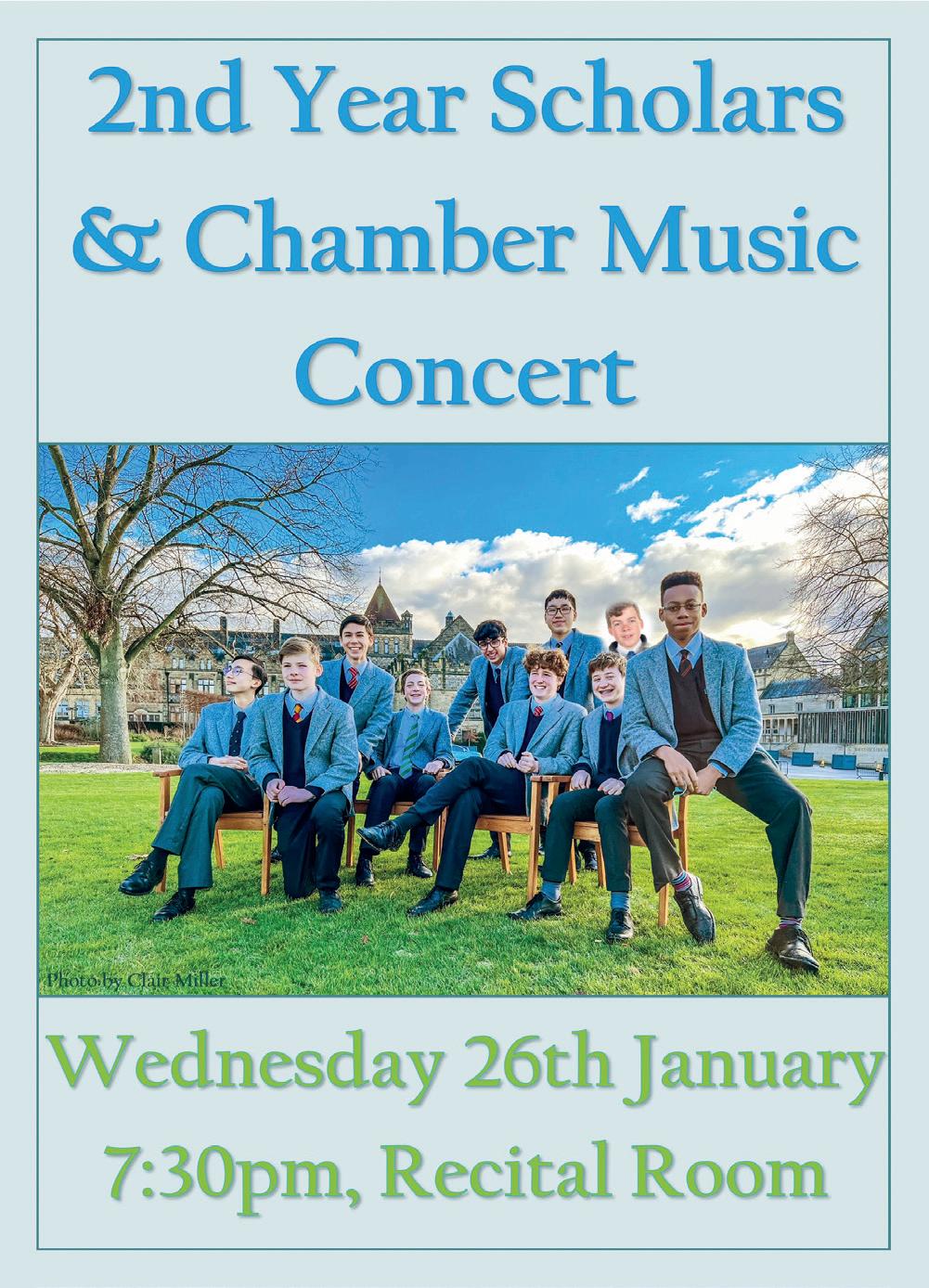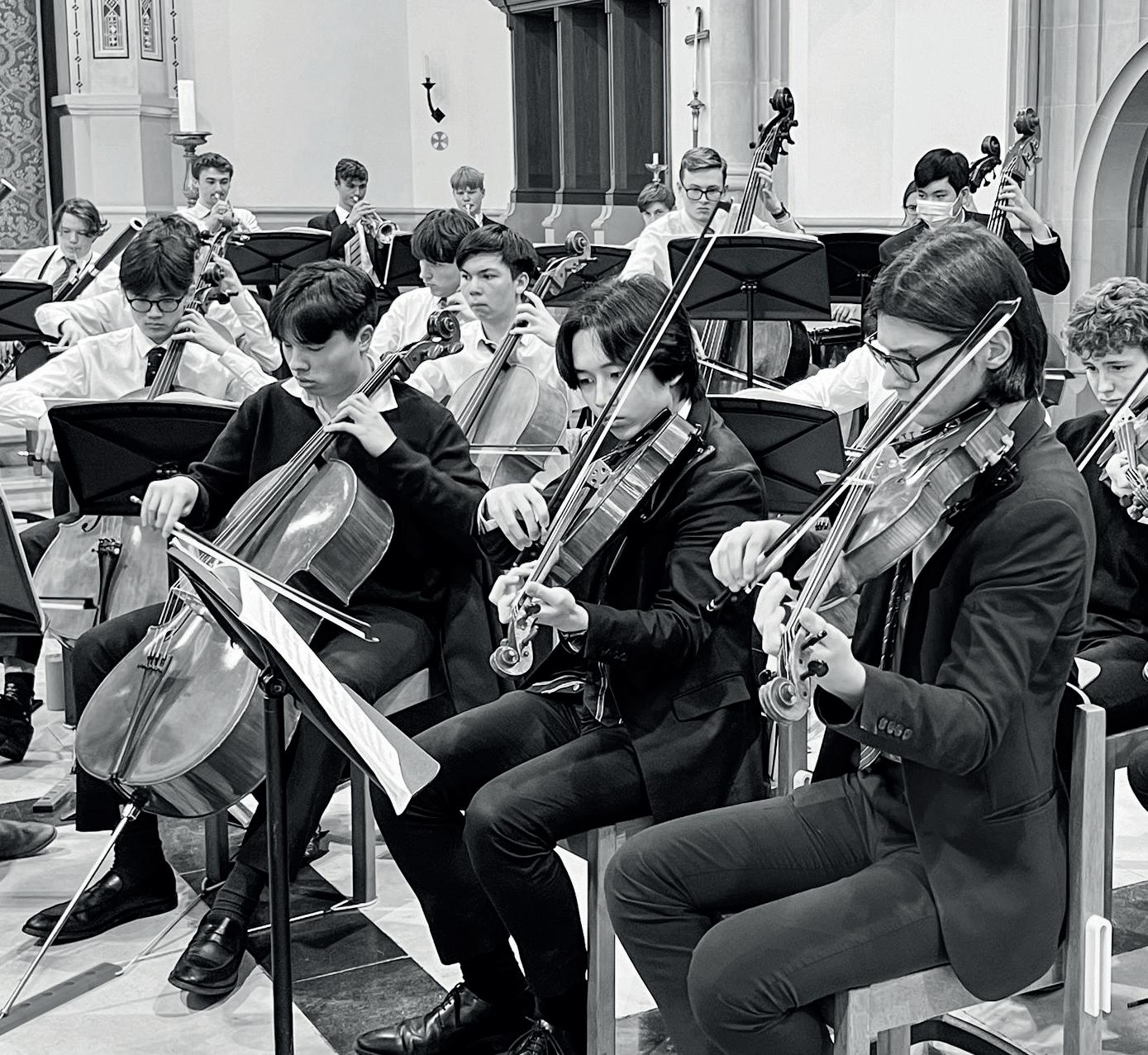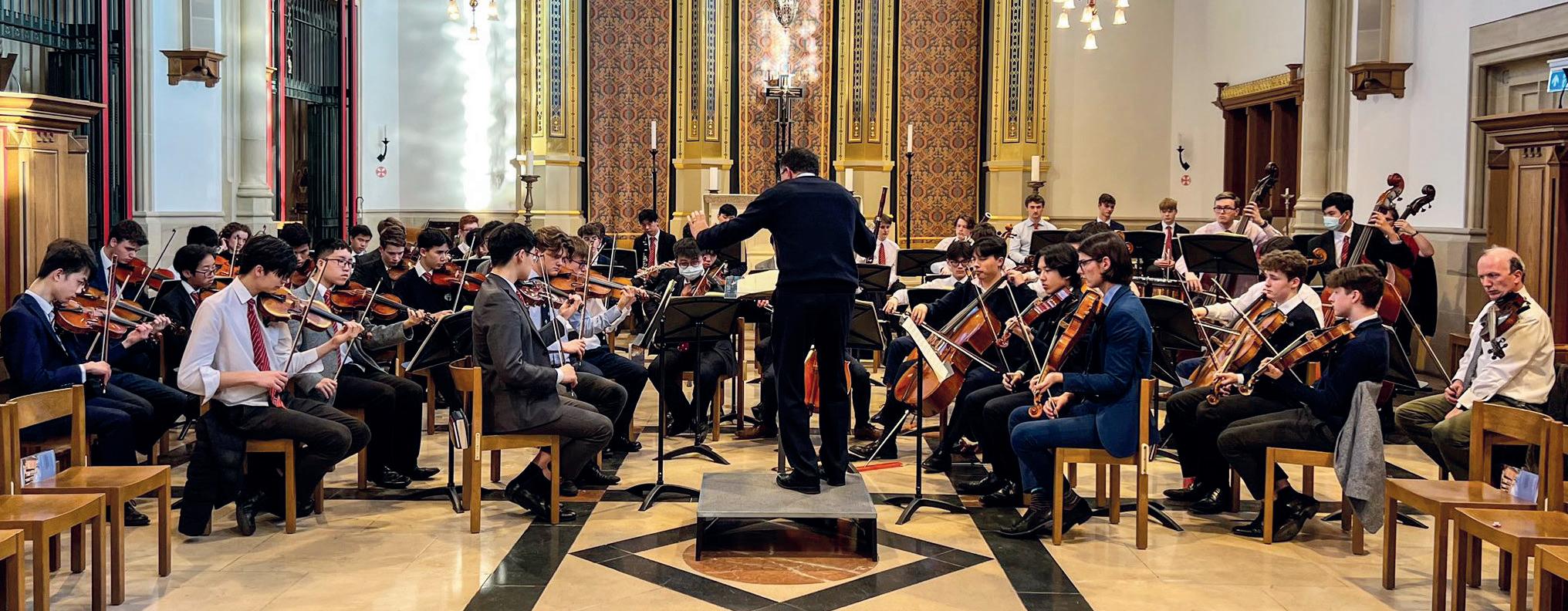
6 minute read
Music
Play on...
As usual the GCSE performances and compositions were wrapped and canned before the end of term before the lengthy, and not-straightforward, marking process, which JRPT undertakes each year as a now expert judge of the system. With a large number of candidates the IGCSE concert included eighteen numbers and a total of thirty-six players who made up the solo and ensemble contributions. For IGCSE both individual and group components are required and these do not have to be made up exclusively of exam candidates. Thus it was possible to combine other members to contribute to a candidate’s exam and grateful thanks go to the four of them who gave their time and skills to that end.
Everything from J S Bach, via Brahms and Massenet to Bridge and the Red Hot Chilli Peppers was performed in that mid-January gig and it certainly had a comfortable feel about it and served to indicate, where necessary, which pieces might feel more at home with something else when it came to the recordings.
A week later came their successors, the second year Music Scholars, plus the opportunity for the

smaller ensembles who had formed Wednesday Afternoon Activity groups to play in the same concert thus providing quite a wide-ranging programme of possibilities.
After an absence of two years the term ended with the crazy ‘Novi Visit’. I say crazy because when asked to describe it the more I say about it the more crazy it seems to me to be. About 135 twelve to thirteen year-old boys arrive at lunchtime the day after our end of term, leave at 4 pm the next day and they too find it hard to describe – or so I’m told. The music department activity, done in future House groups gives each the opportunity to play, from scratch, a piece either in a percussion ensemble or learn, from scratch, a piece on the guitar.
After twelve of those sessions all instrumentalists combine in Big School and the remainder, singers, make up a choir of about 100, and learn a song. The timing: maybe 35 minutes to do that. Steve Rhind and Julian Thomas did an amazing job training, teaching, coaching and coaxing them all. The groups then performed to all the parents who could get into the room successfully rounding-off the Novi visit with coordinated sound! The amazing Tony Maloney, Matt

Novi Visit band with Steve Rhind
Rich, Ray Love and Ali Rafiiee together with the wonderful Artie Paice (JH1) and Maxwell Barton (Sc2) supported the whole event from start to stop.
The highly successful Jazz Night was fully subscribed long before the date. Its social aspect cannot be denied. Its bibulus and other catering accommodation with specially booked tables make this the stuff of social gatherings here. The transition from student plus staff, to student run and performed are telling signs of the increase in both competent and convincing stylistic presentations of a very particular set of jazz skills. The Ronnie Scott’s boys are clearly the outward visible fan-base sign of the inward invisible…

D L Williams

Octagon Concerts
Tonbridge School Symphony Orchestra – Eroica
In the midst of the busy performing life of the music department, with several solo and orchestral concerts over the course of each term, it might be easy to forget that there are many boys who learn music instruments for whom there are not necessarily regular solo performing opportunities. This is where this informal weekly concert platform comes into its own. Over the course of the Lent Term, 74 boys performed across nine concerts, on a plethora of different instruments. For many of the boys, the Octagon Concerts might be the only time they will perform in public as a soloist, and as such, these Friday afternoons are a valuable part of the learning process, and excellent preparation for music exams, too. The weekly audience is made up of other performers, with the frequent addition of supportive peers, matrons, tutors and house masters.
L F Walsh


On 18th March, 2022, the Tonbridge School Symphony Orchestra did something most school orchestras – indeed most orchestras – do not try. Beethoven’s Third. Eroica. ‘Sinfonia Eroica’ composed to celebrate the memory of a great man. A piece Beethoven famously wanted to dedicate to Napoleon. A piece whose themes almost anyone can recall.
One of Beethoven’s most celebrated works, the Eroica is essentially a largescale classical symphony, and marked the beginning of his most innovative ‘middle period’. Composed between 1803-1804, this piece broke the boundaries of symphonic form, length, harmony, and emotional and cultural content. No doubt it wasn’t everyone’s favourite. His “longest and perhaps most difficult of all symphonies, which exhausts even connoisseurs and becomes unbearable for the mere amateur” is widely considered a landmark piece in a transition stage between the Classical and Romantic era, and sometimes named the ‘first Romantic Symphony.’ At its first performance in 1805, one man said that it “produced neither beauty nor true sublimity and power.” I vehemently disagree.
Beethoven’s Third is possibly, “the greatest, most original, most artistic and, at the
same time, most interesting of all symphonies” as described in Journal des Lulus und der Modern in 1807. The great Leonard Bernstein said the first two movements are “perhaps the greatest two movements in all symphonic music.” If he had heard ours, he would’ve dropped the ‘perhaps.’ The Symphony Orchestra performed – as per usual, with unflinching skill and confidence, giving those of us who attended a night to remember.
Each Symphony is a road trip. I. Allegro con brio – in sonata form, with five subjects – introduces that most timeless of themes, one that brings to mind classic cars, Liguria, and ‘perhapsless’ winding roads, roof down. II. Marcia Funebre – adagio assai, with its ‘fugal development that elides into an extensive recapitulation’ is feudal, bringing back Prokofiev’s The Death of Tybalt of our previous concert with its dark and looming themes. III. Scherzo – Allegro vivace. A ‘jest’. A vigorous, playful, dance with rushing string figures at carnival in Venice, and a reprise from the first movement. Then IV. Finale – Allegro molto. If you had shamefully nodded off like the chap from 1805 during the previous movements, unison strings are perhaps the finest alarm clock one could wish for, a reveille readying you for your pizzicato breakfast with a view of the Mar Ligure, becoming gradually more complex as we become gradually more coherent post-stupor. But “any suggestion of academic seriousness is blown away by the brilliance, and ironic wit of the treatment.” Laughing in the face of portentousness, it is a piece – and a performance – that shall not be forgotten.


Mr Forkgen has said: “The Eroica is a considerable challenge for any orchestra. It demands high levels of concentration, instrumental skill and, above all, musicianship in order to get to the heart of the work. The orchestra truly absorbed the piece, going beyond notes on the page, and gave a performance that was thrilling and moving in equal measure.”
Ad maiorem Dei gloriam.
Philip Dorn (JH4)










